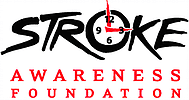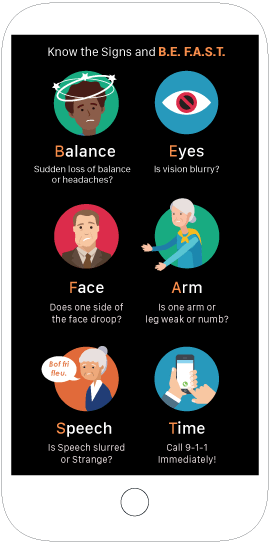
The Role of Technology in Stroke Prevention and Recovery
Throughout the world, highly advanced gadgets and devices are being used on a daily basis. Advancements in the field of science and technology give rise to more effective tools for disease prevention and recovery.
Whether these tools are operated mainly for communication purposes or for other engagements, it is hard to deny that technology plays a huge role in shaping the world and that it greatly contributes to the improved health and wellbeing of individuals.
As technological advancements and capabilities continue to soar, so does the ability of gadgets and mobile devices to aid in preventing strokes and managing the care of people afflicted with this condition. Here are some things you need to know about strokes and its management through tech:
Facts and Figures
In the United States alone, both studies and statistics show that strokes are a leading cause of death and disability. As a matter of fact, the Centers for Disease Control and Prevention say that this silent killer affects 1 out of 20 people and kills around 140,000 people every year. Every 4 minutes, a person dies due to this illness, with someone experiencing it every 40 seconds.
What is a Stroke?
According to the American Stroke Association, the condition is defined as a type of disease which attacks the arteries. It occurs when a blood vessel leading to and within the brain ruptures or is blocked, thereby stopping the flow of oxygen and nutrients to the brain. As a result of this clot or rupture, brain cells die in the process.
Since the brain is the control center of the body, the brain can no longer send signals to the different parts of the body, leading it to malfunction. Some of the more devastating and debilitating effects of this condition include death, paralysis, memory loss, loss of vision or vision problems, and difficulties in speech and language.
Signs and Symptoms
While public misconception typically says that strokes only occur in people with old age, studies say that this disease can occur at any age. While the risk for this condition goes up as individuals get older there is ample evidence which indicates that individuals can fall at risk to this condition at a very young age.
In fact, those who are diagnosed with high blood pressure, high levels of cholesterol, obesity, diabetes, and history of smoking have higher chances of stroke. In a study conducted in 2009, it showed that at least 34% of the individuals who were hospitalized with this disease fell under the age of 65.
While the world revolves around the highly advanced technological medical landscape, there are still some people who remain in the dark about this type of illnesses. The most common signs and symptoms of this condition include numbness or weakness in the facial structure or extremities on one side of the body, confusion, slurred speech, blurred vision, difficulty in walking or balancing, and severe headaches.
While knowing these warning signs serve as a great help in addressing the onset of a stroke and preventing it from further escalating, technological advancements in the field of medicine lends great help in ensuring the safety and survival of individuals suffering from this condition.
The Importance of Technology
With various technological developments aiding different medical fields, there is no surprise that these advancements are also making waves in stroke management. Besides identifying and determining symptoms of this illness, both information technology and mobile health applications provide helpful tools in addressing the concerns that stem from this sector.
Technology also aids healthcare providers and patients can monitor their cardiac health without complicated procedures. Advanced devices also aid in prevention, detection and rehabilitation. Check out various pieces of tech being used in this field:
Stroke Awareness Foundation App
On the forefront in this industry is the Stroke Awareness Foundation App built by San Francisco App Development Company Core Mobile Apps. This app enables individuals to identify the signs of this condition with visuals and locate Certified Stroke Centers in the country.
The mobile app is also capable of calling 911 and informing the operator about the patient’s condition, alongside informing emergency contacts regarding the patient’s condition and location. Because many 911 systems cannot locate the patient, the emergency contact is encouraged by the app to call 911 again with that information. The GPS locator allows faster responses from the medical team and 911 systems.
More than this, the application is geared towards helping users gain overall insight and awareness about the condition. From recognizing the symptoms to finding the nearest Stroke Certified hospital and treatment center, the Stroke Awareness Foundation mobile app guides patients and healthcare providers alike in expediting processes toward treatment. Through this application, the SAF allows treatment to be facilitated the soonest possible time, thereby reducing the negative effects that come with delayed administration of treatment.
Apple Watch ECG App
Smart devices, particularly phones and watches, are ubiquitous in society. Cardio patients who want to conveniently monitor their cardiac health can use these gadgets. Apple Watch is one of the most progressive when it comes to managing this condition. The latest additions to the device include an ECG app capable of determining whether a patient’s heart rhythm is indicative of atrial fibrillation (AFib). AFib is a type of irregular heartbeat that increases chances of stroke.
Atrial 4-D Flow Cardiac Magnetic Resonance
This non-invasive technique allows medical care providers to create a dynamic image of a patient’s blood flow. This means that the image will be in three-dimension all without special equipment.
As this tech is software, it is easy to implement in modern facilities. Hospitals and clinics only need to install the 4-D flow CMR software into their current MRI apparatuses.
Video Games
While stroke is a preventable disease, addressing it is the top priority once it happens. One of the most challenging aspects of this is rehabilitation. Experts say that playing video games can hasten a patient’s recovery. Not to mention, it is a treatment regimen that is exciting, enjoyable and easily done at home.
One example of a video game designed for recovery is Shark Showdown. This game makes use of a robotic joystick which patients use to control the character. According to experts, this helps survivors exercise their brain and body at the same time.
Virtual Reality
Aside from playing video games using controllers, researchers are now using virtual reality (VR) to help exercise body movements. Survivors are placed in a virtual environment in which they will be required to practice everyday movements in a safe and controlled manner.
This aims to help recovering patients to repeat movements that they regularly perform in real life such as while cooking. However, as it is a virtual environment, the exercise can be done in a safe setting without risks for the patient.
With the various advantages technology has to offer for stroke management, many patients can benefit from these advancements. These developments can also aid in preventing the occurrence of stroke, minimizing the need for treatments related to recovery. As many individuals use technology in their everyday lives, they can incorporate these measures with ease.
Additional Reading:
https://www.cdc.gov/stroke/facts.htm
https://www.ncbi.nlm.nih.gov/pmc/articles/PMC3859007/
https://www.stroke.org/en/about-stroke
https://www.stroke.org/en/about-stroke/effects-of-stroke
https://www.cdc.gov/stroke/signs_symptoms.htm
https://www.strokeinfo.org/mobile-app/
https://www.cnet.com/news/apple-watch-ecg-app-what-cardiologists-want-you-to-know/




